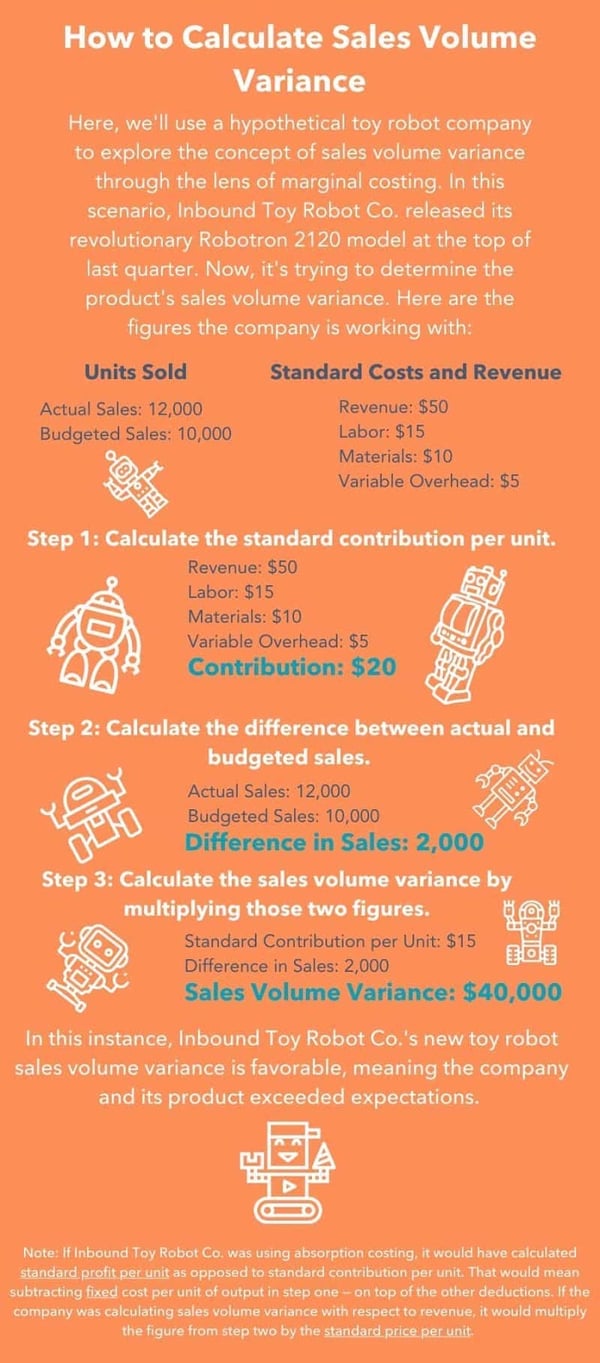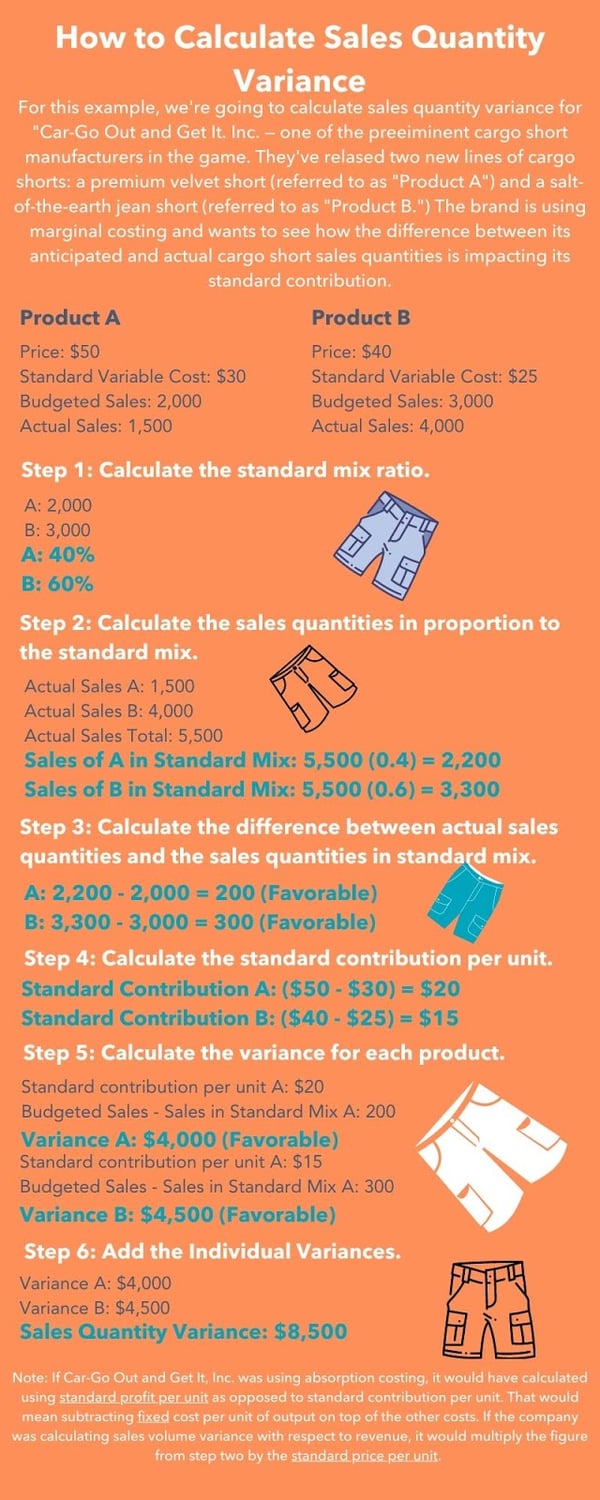That's no secret. It's fairly straightforward. What's less obvious is tracking whether a product's sales are underperforming, to what degree they might be lagging, and figuring out how to remedy that problem at hand. A metric known as sales volume variance might be the most practical measure to help you address those points.
Here, we'll get some insight into what sales volume variance is, how to calculate it, a practical example of what it might look like, and perspective on a similar metric known as sales quantity variance
How you calculate sales volume variance will vary by the costing technique you leverage and whether you're interested in measuring in terms of profit or revenue.
If you're using absorption costing — a method where you consider all costs of production, including fixed overhead — your calculation will rest on standard profit per unit.
If you're measuring your sales volume variance in terms of marginal costing — costing based on variable costs — you'll use a figure known as standard contribution per unit. And if you're looking to calculate sales volume variance based strictly on revenue, you'll need to use the standard price for each individual unit.
Sales volume variance offers you the necessary insight to better shape the strategies you use to budget sales, your methods for determining price points, as well as a host of other factors relevant to aspects of your business like marketing and distribution.
If your sales volume variance is favorable, it means your business is on the right track. If it's unfavorable, you might have to look into product-relevant concerns like competition, price, trade restrictions, or whether you have too many similar products on the market at once.
Sales volume variance can be a tricky concept to pin down, and it's easier to understand in application than in theory. Here's a helpful example of a company leveraging the formula above to determine its sales volume variance.

Sales Quantity Variance
Sales quantity variance is a metric that covers the difference between the quantity of units of a product a company sells and the amount it was anticipating to sell. It's a figure that essentially tracks an increase or decrease in budgeted profit that stems from the variation between the actual and expected numbers of units sold.
As I mentioned, it's a natural extension of sales volume variance. But where sales volume variance measures the impact on budgeted profit or revenue as a result of the difference between the volume of actual and budgeted sales, sales quantity variance addresses how profit is impacted by difference between the actual and budgeted sales mix — a calculation that determines the proportion of each product a business sells relative to total sales.
Since sales quantity variance relies on proportional sales of different products, it only applies to companies that sell two or more products at a time.
Sales quantity variance isn't a particularly intuitive concept. A lot goes into applying the formula listed above. Here is an example of a hypothetical company trying to calculate the sales quantity variance for two of its new products.

Sales volume variance and sales quantity variance are important, telling metrics that have serious implications on several aspects of your business. The favorability of those measures will help shape how you project sales, market and price products, and the processes and strategies your sales team will operate by.
If your business distributes any sort of product, it's important to track these figures. You need to know if you're setting realistic expectations that you can reliably plan around and whether you're consistently moving enough units to either maintain or change the course you're on. Sales volume variance and sales quantity variance provide the first step to doing just that.
Sales Metrics
.png?width=112&height=112&name=Image%20Hackathon%20%E2%80%93%20Square%20(14).png)
.jpg)




-Nov-05-2025-08-56-33-6007-PM.webp)
![Sales metrics: What to track, how to track, & why [expert tips]](https://53.fs1.hubspotusercontent-na1.net/hubfs/53/Sales-metrics-1-20251030-6874232.webp)




